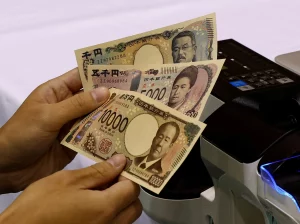In the rapidly evolving landscape of digital assets, Non-Fungible Tokens (NFTs) have emerged as a revolutionary phenomenon, transforming the way we perceive ownership, creativity, and the digital economy. Unlike cryptocurrencies such as Bitcoin or Ethereum, which are interchangeable and identical, NFTs represent unique assets, each with its own distinct value and ownership. This article delves into the concept of NFTs, explores their implications across various domains, and examines their potential to redefine the future of ownership and digital expression.
Understanding NFTs

At its core, an NFT is a digital certificate of ownership, recorded on a blockchain, typically Ethereum. This blockchain technology ensures transparency, immutability, and security, making it impossible to counterfeit or duplicate NFTs. Each NFT contains metadata that defines its characteristics, provenance, and ownership history, providing a comprehensive record of its existence. This metadata can include anything from digital artwork and music to virtual real estate and collectibles, granting individuals the ability to authenticate and transfer ownership of digital assets with unprecedented ease.
The Rise of NFTs in Art and Culture
One of the most prominent applications of NFTs is within the realm of art and culture. Artists, musicians, and creators can tokenize their work as NFTs, allowing them to monetize their digital creations directly and engage with a global audience without intermediaries. This has democratized the art world, enabling emerging artists to gain recognition and compensation for their contributions. Moreover, NFTs have sparked new forms of artistic expression, blurring the lines between traditional and digital art and challenging established notions of value and ownership.
Implications for Intellectual Property and Licensing
NFTs also hold significant implications for intellectual property rights and licensing. By tokenizing content as NFTs, creators can enforce copyright protections, ensure fair compensation for their work, and streamline licensing agreements. Smart contracts embedded within NFTs can automatically distribute royalties to original creators whenever their work is resold, fostering a more equitable ecosystem for content creators in the digital age.
NFTs and the Gaming Industry
In the gaming industry, NFTs are revolutionizing the concept of in-game assets and virtual economies. Players can purchase, trade, and collect NFT-based items within games, providing them with true ownership and value retention beyond the confines of a single gaming platform. This has profound implications for game developers, as they can now create unique, scarce digital assets that hold real-world value, thereby incentivizing player engagement and fostering thriving virtual economies.
Environmental Concerns and Criticisms
Despite their transformative potential, NFTs have also faced scrutiny, particularly regarding their environmental impact. The energy-intensive process of minting and trading NFTs on blockchain networks, notably Ethereum, has raised concerns about carbon emissions and sustainability. Critics argue that the ecological footprint of NFTs undermines their utility and sustainability credentials, prompting calls for greener alternatives and energy-efficient blockchain solutions.
Challenges and Opportunities Ahead
While NFTs have unlocked new avenues for creativity and ownership, they also confront various challenges that must be addressed to realize their full potential. Scalability issues within blockchain networks have led to congestion and exorbitant gas fees, hindering the accessibility of NFT markets to a broader audience. Additionally, the lack of regulatory clarity surrounding NFTs raises legal uncertainties regarding intellectual property rights, taxation, and consumer protection. Addressing these challenges requires collaborative efforts from industry stakeholders, regulators, and technologists to establish robust frameworks that foster innovation while safeguarding the rights and interests of all participants.
Looking Forward: The Future of NFTs
Despite the hurdles that lie ahead, the future of NFTs appears promising, with potential applications extending beyond the realms of art and gaming. As blockchain technology continues to evolve and mature, NFTs have the potential to revolutionize industries such as real estate, education, and supply chain management. From tokenizing real-world assets to enabling fractional ownership and enhancing transparency in global transactions, NFTs hold the promise of creating a more equitable and interconnected digital economy. With continued innovation and collaboration, NFTs are poised to redefine ownership, creativity, and value exchange in the digital age, shaping the landscape of tomorrow’s economy.
Comparative Analysis of NFT Platforms
To better understand the landscape of NFT platforms, let’s conduct a comparative analysis based on key criteria such as user interface, transaction fees, environmental impact, and support for different file types:
| Platform | User Interface | Transaction Fees | Environmental Impact | Supported File Types |
|---|---|---|---|---|
| OpenSea | Intuitive | Variable | High | Various |
| Rarible | User-Friendly | Variable | High | Various |
| Foundation | Sleek | Variable | High | Various |
| SuperRare | Elegant | Variable | High | Various |
| Decentraland | Immersive | Variable | High | Various |
Conclusion
In conclusion, NFTs represent a paradigm shift in how we perceive and interact with digital assets, offering new opportunities for creators, collectors, and investors alike. Despite facing criticisms and challenges, the potential applications of NFTs across art, gaming, and intellectual property rights are vast and transformative. As the technology continues to evolve and mature, it is imperative to address concerns surrounding sustainability and accessibility to ensure that NFTs remain a force for positive change in the digital economy.




